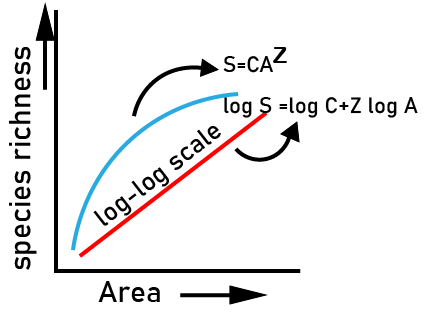Class 12 Biology Chapter 13 Summary Notes PDF Download


FAQs on Biodiversity And Conservation Class 12 Biology Chapter 13 CBSE Notes - 2025-26
1. What are the key concepts summarised in Biodiversity and Conservation Class 12 Notes for quick revision?
Biodiversity And Conservation Class 12 Notes highlight essential concepts such as the types of biodiversity (genetic, species, ecosystem), patterns of biodiversity (latitudinal and altitudinal gradients), major threats (habitat loss, overexploitation, alien species, co-extinctions), conservation methods (in situ and ex situ strategies), and India’s biogeographical regions. Each concept is linked to real-life applications, supporting quick recap and exam preparation.
2. How should students organise their revision for Biodiversity and Conservation Class 12 to enhance retention?
To maximise retention, students should break the chapter into logical sections, such as concepts of biodiversity, threats to biodiversity, and conservation strategies. Summarising each section in their own words and creating concept maps or key-point lists makes information easier to recall. Regularly reviewing these summaries supports better memory and exam readiness.
3. Why is understanding biodiversity important for exam revision as per the CBSE Class 12 Biology syllabus?
Biodiversity is crucial for ecosystem stability, higher productivity, resilience against disturbances, and adaptation to environmental changes. Recognising its role helps students connect theory to environmental issues, which is often tested in application and reasoning questions in CBSE board exams.
4. What are the major patterns of biodiversity that should be revised from Class 12 notes?
The major patterns include the latitudinal gradient (higher biodiversity near the equator) and the altitudinal gradient (biodiversity decreases with increasing altitude). Recognising these patterns allows students to understand how and why diversity varies geographically, which is a key concept in the syllabus.
5. Which threats to biodiversity are most important for revision and why?
The four main threats, often referred to as the evil quartet, are habitat loss and fragmentation, overexploitation, alien species invasion, and co-extinction. These topics are essential because they cover both direct and indirect factors leading to species decline, a frequent area for exam questions and application-based answers.
6. How do in situ and ex situ conservation strategies compare according to the Class 12 Biology notes?
In situ conservation protects species in their natural habitats (e.g., national parks, biosphere reserves), supporting ecosystem processes. Ex situ conservation involves preserving species outside their natural environment (e.g., seed banks, botanical gardens, zoos). Knowing the differences and examples for each is vital for comprehensive revision.
7. What revision methods are recommended for mastering the chapter on Biodiversity and Conservation?
Effective revision methods include
- Creating flashcards for definitions and key terms
- Drawing concept maps linking themes
- Writing quick summaries after each section
- Practising with previous year and sample questions
- Discussing doubts with peers or teachers
8. How can real-life examples enhance revision for Biodiversity and Conservation in Class 12?
Relating concepts such as conservation methods or loss of diversity to real-life cases (like Indian biodiversity hotspots or invasive species impact) helps in remembering facts and crafting application-based answers, which are valued in board exams.
9. What are some common misconceptions students should clarify during their revision of Biodiversity and Conservation?
Students often assume
- Biodiversity only refers to animals (it includes plants, microbes, and genetic variation too)
- Conservation is solely about wildlife protection (it also involves sustainable development)
- All types of diversity are the same (species, genetic, and ecosystem diversity are distinct)
10. In what ways do concept maps or summaries support last-minute revision of Biodiversity and Conservation?
Reviewing concept maps and structured summaries provides a visual and quick overview of interlinked chapter topics. This technique enables efficient recall of key concepts and relationships, especially helpful for rapid revision just before exams as required for CBSE 2025-26 Biology syllabus.
11. Why is measuring both species richness and evenness significant in biodiversity studies?
Species richness counts the number of different species in an area, while species evenness measures how evenly their populations are distributed. Both metrics are crucial for assessing an ecosystem’s overall biodiversity, making them important points to recall during answer writing.
12. How does summarising each section of the chapter improve understanding and memory retention?
Writing section summaries in your own words reinforces understanding and provides a personal reference for quick revision later. This practice promotes deeper learning and ensures that you can recall and apply the material in different exam contexts.








































